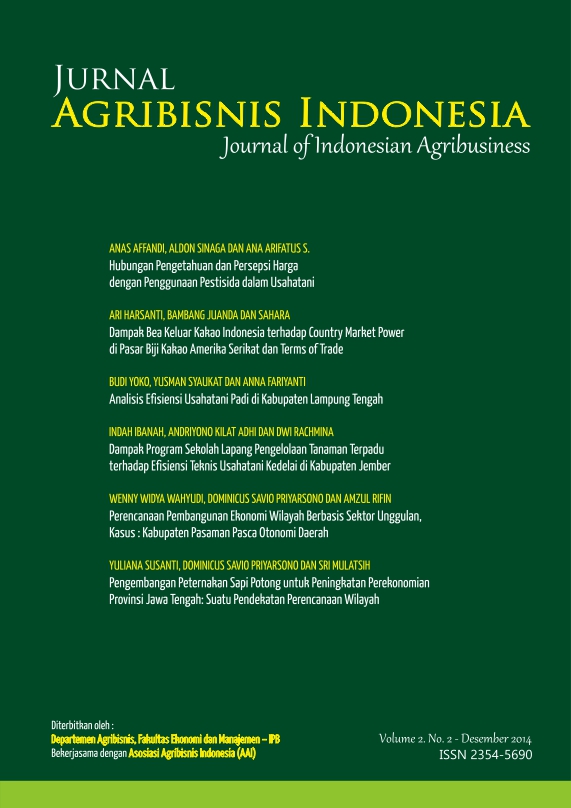Analisis Efisiensi Usahatani Padi di Kabupaten Lampung Tengah
Main Article Content
Abstract
An effort to increase rice production through agricultural extension in Central Lampung regency is difficult. This is because of the limited land that can be used as new planning areas and high competition for land use as non-agricultural activities. Therefore, the increase in rice production through production efficiency becomes the most important alternative. The objectives of this study are to analyze the level of technical efficiency, allocative efficiency, and economic efficiency of rice farming in Central Lampung district and identified the factors that influence it. The results of the analysis using stochastic frontier production function shows that rice farming in the study area has been efficient. Average efficiency level of technical efficiency is 0,94, allocative efficiency is 0,93, and economic efficiency is 0,88. The land area is the most responsive variable in an effort to increase rice production. Variables expected to affect the degree of technical efficiency of rice farming is the number of family members of farmers, rice farming experience, acces farmers to agricultural financing, and number of agricultural extension.
Article Details
Section
Jurnal Agribisnis Indonesia (JAI) is an Open Access Journal. The authors who publish the manuscript in this journal agree to the following terms:
Creative Commons License
JAI is licensed under a Creative Commons Attribution 4.0 International License. This permits anyone to copy, redistribute, remix, transmit, and adapt the work provided the original work and source are appropriately cited.
This means:
(1) Under the CC-BY license, authors retain ownership of the copyright for their article, but authors grant others permission to use the content of publications in Jurnal Agribisnis Indonesia in whole or in part provided that the original work is properly cited. Users (redistributors) of JAI are required to cite the original source, including the author's name, JAI as the initial source of publication, year of publication, volume number, issue, and Digital Object Identifier (DOI); (2) Authors grant JAI the right of first publication. Although authors remain the copyright owner.

